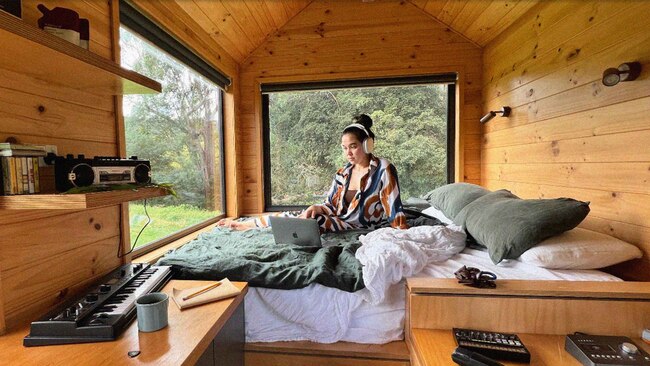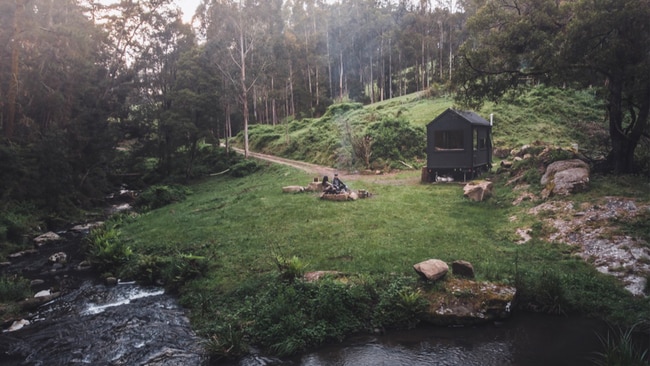This sound system tricks your brain
When producers employ Spatial Audio, you feel completely surrounded.

When producers employ Spatial Audio, you feel completely surrounded.
Music has its own special kind of magic. The right song can transport you back to being a little kid in the car driving to your grandparents’ place, or your bedroom when you cried over your first breakup, or just the ordinary day when you heard your favourite song.
Those feelings rely on memories and emotive melodies, but when producers properly employ Spatial Audio, the right song can give you a sense of space and place of somewhere you’ve never been before. To understand why Spatial Audio matters as a technical advancement, we have to go back to the advent of recorded sound.
The technology was designed for movies to build on 5.1 and 7.1 surround sound and move to a more object-based sound. Ie; instead of the sound of the bird coming from the front left speaker, it could start at the front left, fly overhead and then land behind you. Spatial Audio builds on the foundation of Dolby Atmos, acknowledging that most people aren’t going to have 27 to 400 speakers in their home, and certainly won’t take that with them.
Spatial Audio is for headphones and uses a bunch of maths and psychoacoustics to trick your brain into thinking it’s surrounded by speakers. It’s best employed on the more premium Apple headphones, like the AirPods Pro and AirPods Max, and is mostly found on Apple streaming services, like Apple Music and Apple TV+.
While many older songs have been remixed to have Spatial added after the fact, the best experience is on songs first mixed in Spatial, like 'Therefore I Am' by Billie Eilish, which can make you feel completely surrounded. To understand why Spatial Audio matters as an artistic advancement, we need to talk to the people who take the maths and turn it into art.
Wade Keighran is an audio engineer who worked on the recent Unyoked: Field Recordings Vol. II compilation (as well as the recent Baz Luhrmann Elvis film). The Field Recordings are a great example of the applications for Spatial Audio in music because the compilation features six artists who stayed in remote Unyoked cabins to write music surrounded by nature.

It was Keighran’s job to record nature and make it feel like you were there with the artists. For him, Spatial and these kinds of recordings are important on multiple levels.
“The reason why I loved this recording is that at some point in the future, people aren’t going to know what our planet sounded like without noise pollution. It was important to me to get the the 360-ness of it.”
He compares it to photographers capturing the Northern Lights or beautiful sunsets to capture them before light pollution makes them invisible. It’s also a good point of difference.
“There's a million stereo recordings out there of atmospheres and beaches and stuff, but to really feel like you're there I think this [Spatial] is really great way to do it.”
The introduction of Spatial has changed the way he approaches music, as well.
“A good song is a good song in any language. However you play it to me, I can connect to a good song…But there is some magic about this Spatial Audio thing, and we’re at the forefront of it right now.”
For Keighran, he discovered that magic when he listened to a song he knew extremely well in stereo, mixed in Spatial for the first time, and realised he had been missing elements the band had recorded that couldn’t be heard in stereo. He discovered backing vocals and other instruments, like seeing a picture in 2D for years and then discovering there’s a 3D model of the space you can turn in your hands.
I recently visited one of those Unyoked cabins. I’m hardly the outdoorsy type, but it's difficult to deny the kind of peace you can find when you allow yourself to be still in nature.

The crackle of the fire, the sound of the babbling brook, a lyrebird imitating the sound of the smoke alarm from when you burnt the eggs that morning, a sheep bleating in the distance. I moved to the inner city from the country when I was 15, and it’s a feeling of peace that I sometimes I forget I miss. It’s a memory, or a requirement for living, locked deep within my bones, even if it’s not a life I would enjoy full time.
Listening to the Unyoked: Field Recordings Vol. II compilation with my eyes closed on good Spatial Audio headphones transports me to that place, even if only for a moment. 'If God Is The Pigeon' by Ruby Gill has the birds in the trees and the themes of existential angst that comes from being cut off from the world you’re used to as you reassess your priorities.
Because of how the object-based tracking works, you really get a sense of where the birds are in relation to you, as well as the gentle breeze through the trees. Listening on regular stereo headphones, you still get a nice experience, but it doesn’t transport you like the Spatial does.
Keighran cautions that Spatial isn’t right for every song, though. “What serves the song the best is a producer or engineer’s modus operandi. Why try to force it into Atmos if it just needs a stereo mix? But you won’t know until you try it. Not everything does work inSpatial, but so much does.” However, Spatial and Dolby Atmos are the next dimension of sound and open a new world of potential (with the right equipment).
“Music can change the world. It’s something that you can’t touch, it’s a phantom; you can’t see it, you can’t hold it, but it can affect you emotionally. If a song can make me cry right now, just listening to it out of one speaker in a shopping centre, imagine you were living inside that song, what it could do to you? To take it to the next level and make it even more magical sounds like a great idea to me.”


